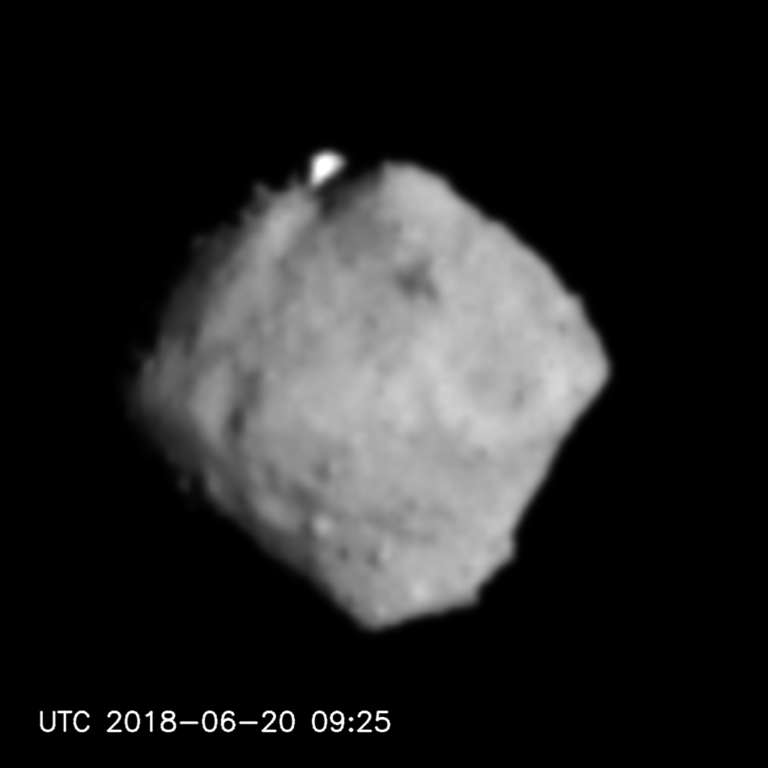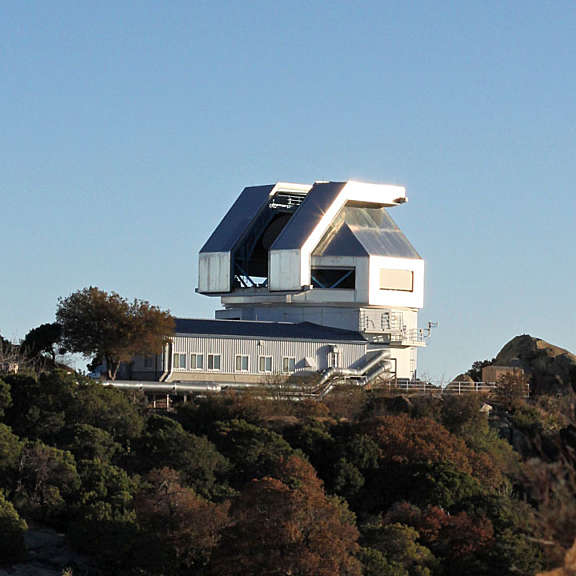All
All
Stories, updates, insights, and original analysis from The Planetary Society.
Hayabusa2 arrived at Ryugu, so I can make comparisons of asteroid scales!
On 26 June 2018, Hayabusa2 arrived at its target asteroid, Ryugu. In a very brief status update, I present comparisons of Ryugu to other previously visited asteroids and comets.
Hayabusa2 update: New views of Ryugu and corkscrew course adjustments
Ryugu has continued to grow in Hayabusa2's forward view, resolving into a diamond-shaped body with visible bumps and craters! They've done hazard searches, optical navigation imaging, and measured the rotation rate at 7.6 hours.
Rotatin' Ryugu!
Hayabusa2 continues to approach asteroid Ryugu, revealing the 900-meter-wide world in all its glory.
How China's lunar relay satellite arrived in its final orbit
It took 24 days for Queiqiao to reach an Earth-Moon L2 halo orbit.
Dawn Journal: Spiralling Down
Propelled by the perfect combination of xenon ions, hydrazine rocket propellant and adrenaline, Dawn is on the verge of its most ambitious exploits yet.
The Mars Exploration Rovers Update Special Report: Opportunity Pummeled by Massive Dust Storm, Hunkers Down to Sleep
Entrenched in the west rim of Endeavour Crater, veteran robot field geologist Opportunity is hunkered down in Perseverance Valley in a kind of hibernation mode.
Hayabusa2: Ryugu takes shape
Hayabusa2 is now less than 1000 kilometers away from Ryugu, and the tiny asteroid is beginning to betray its shape.
Chinese satellite snags new views of Earth from lunar orbit
See the world through the eyes of Longjiang-2.
Get ready for OSIRIS-REx at Bennu! ...but be patient.
NASA's OSIRIS-REx will get the first sight of its target Bennu in August and go into orbit in December.
Meet MMX, Japan's sample return mission to Phobos
NASA is providing an instrument for the mission, which will try to uncover the origins of Phobos and Deimos.
Hayabusa2's Approach phase has begun with a new photo of Ryugu!
On June 3, Hayabusa2 ended use of its ion engines, for now, and is coasting the remaining distance toward Ryugu. It's using an optical navigation camera to image the asteroid's position against a field of background stars to help it navigate.
Big news from the magnetosphere
At five years and counting, the Van Allen Probes mission continues to reshape our thinking about how Earth’s radiation belts flex and reconfigure under the influence of solar storms.
A WIYN-win partnership
NASA and the National Science Foundation are teaming up to observe exoplanets discovered by Kepler and TESS.
The Mars Exploration Rovers Update: Opportunity Makes Tracks on Magical Mystery Tour of Different Rocks
Opportunity continued exploring the south trough of Perseverance in May, still looking for evidence that explains just how this one-of-a-kind valley meandering through Endeavour Crater’s rim formed.
How long is a day on Saturn?
One of the Cassini mission's goals was to figure out how long a day on Saturn is. We still don't know. A new paper reports a measurement of the rotation period of Saturn that is different from past measurements.
How to keep up with Hayabusa2
Hayabusa2 is approaching asteroid Ryugu! Here's how to stay on top of mission news and the mission's planned schedule for 2018.
Dawn Journal: Getting Elliptical
For the first time in almost a year, the Dawn mission control room at JPL is aglow with blue.
Approaching Mars on Spaceship Earth
One of the great things about space exploration is how it can shift your perspective. And you don't even need to leave home.
Mastcam-Z team blog: We've got flight hardware!
Right after the last Mastcam-Z team meeting a year ago (link here to last two blog posts), our team finalized the design of the cameras, and then the fantastic voyage of creating Martian panoramic zoom cameras began.
Chang'e 4 relay satellite, Queqiao: A bridge between Earth and the mysterious lunar farside
China's fourth lunar mission, Chang’e 4, is expected to begin on May 21 with the launch of a Long March 4C rocket from the Xichang Satellite Launch Centre in the southwest of China. The launch will carry a spacecraft named Queqiao, which will serve as a communication relay satellite between Earth and the lunar farside.


 Explore Worlds
Explore Worlds Find Life
Find Life Defend Earth
Defend Earth


 Sun
Sun Mercury
Mercury Venus
Venus Earth
Earth Mars
Mars Jupiter
Jupiter Saturn
Saturn Uranus
Uranus Neptune
Neptune Small Bodies
Small Bodies

















